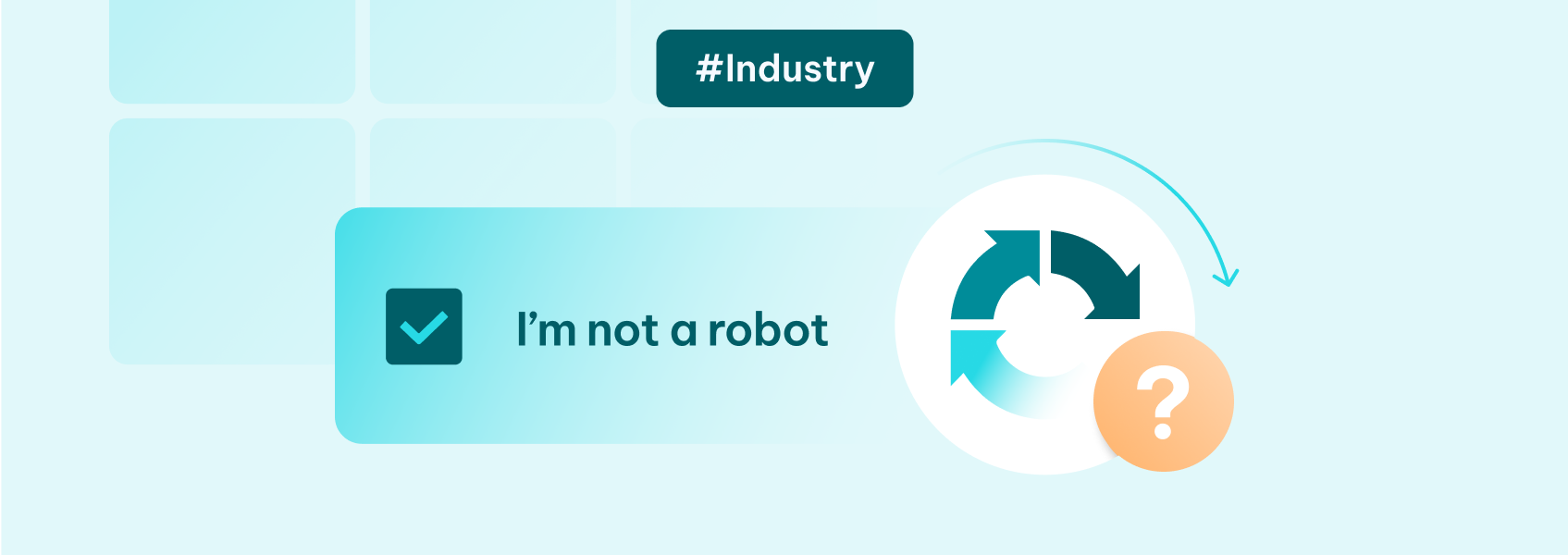What Is CAPTCHA: The Digital Gatekeeper Between Humans and Bots
News

Kazys Toleikis
Key takeaways:
- CAPTCHAs separate real users from bots by making visitors solve simple but tricky challenges.
- Different types of CAPTCHAs exist, including text-based, CAPTCHA images, and audio tests.
- The future of CAPTCHAs is shifting toward behavior analysis, biometric security, and invisible background verification.
If you ever found yourself trying to enter a club, it’s very likely that you saw a bouncer at the door, checking IDs. This bouncer ensures that only legitimate guests get in while keeping troublemakers out. That’s exactly how CAPTCHAs work on the internet.
They separate human users from malicious bots by making visitors complete small tests before granting access. Websites use CAPTCHAs to protect against spam, fake accounts, and automated attacks.
But while they help with security, they also frustrate legitimate users. At some point, you probably had to decide if a small black corner of a traffic light counts as a traffic light in the puzzle. And then whatever you chose, it was wrong.
What Is a CAPTCHA and How Does CAPTCHA Work
What is CAPTCHA? The term stands for “Completely Automated Public Turing test to tell Computers and Humans Apart”. In simple terms, it’s a test designed to challenge computers while keeping things easy for human users.
These tests take advantage of tasks that people find simple, but computers struggle with. The main examples you’ve likely seen somewhere are distorted texts that you have to enter in a field or recognizing objects in puzzle-like images.
It’s difficult for bots because they usually rely on strict rules, while people can solve them with intuition and experience.
Benefits and Drawbacks
CAPTCHAs help websites in two major ways:
- They stop malicious bots from spamming forums, submitting fake sign-ups, or brute-forcing passwords.
- They protect online services by ensuring only human users can access certain features.
However, as with everything, there are some downsides, too:
- For legitimate users, they are annoying and time-consuming.
- They create accessibility issues for people with vision impairments, especially text-based tests.
- Sometimes, even humans fail them multiple times, which makes it frustrating and damages the user experience.
Common Types of CAPTCHAs
Websites use different CAPTCHA solvers to filter out bots. Here, you will find some of the most common ones.
1. Text-Based CAPTCHAs
These show distorted letters and numbers that users must type correctly. Since bots struggle with reading the distortions, they don’t know how to enter CAPTCHA correctly. Textual CAPTCHAs act as a simple way to identify bots and block their passage.
2. CAPTCHA Image Challenges
Users must pick specific objects from a group of pictures, like selecting all squares that contain crosswalks or stop signs. This method relies on image recognition, which is not only tricky for bots but also frustrates real users.
3. Audio CAPTCHA
For users who have vision impairments, an audio CAPTCHA plays a series of numbers and words that must be typed correctly. However, more advanced bots with speech recognition tools are getting better at solving these.
4. Google’s reCAPTCHA
Google’s reCAPTCHA doesn’t always require input. Instead, it analyzes user behavior, like mouse movement and browsing patterns, to decide if you are a bot or a human. When necessary, it presents tests similar to CAPTCHA image challenges. There are also different versions of the test.
If you’re wondering about reCAPTCHA v2 vs. v3, reCAPTCHA v2 often requires users to check a box or solve puzzles, while reCAPTCHA v3 works invisibly by scoring how “human” your behavior appears.
What Triggers a CAPTCHA Test
Websites don’t throw CAPTCHAs at random. They only appear when something seems off.
Common Triggers
- Multiple failed login attempts in a short time.
- Large numbers of requests from the same IP address.
- Suspicious browsing behavior, like skipping from page to page too fast.
- Using a browser with no cookies or history.
- Abnormal loading of website resources.
Basically, if you act like a bot, you can expect to get hit with a CAPTCHA test.
How to Legitimately Avoid CAPTCHAs
Nobody likes clicking through endless image grids unless they’re getting paid for it. Here’s how you can reduce your chances of getting stuck with a CAPTCHA test:
- Use a trusted browser with cookies enabled since websites rely on these to recognize real visitors.
- Maintain a verified account when using platforms that frequently show CAPTCHAs.
- Avoid making too many requests in a short period because it could make you look like a bot.
- Don’t use VPNs or proxies with shared IPs, as these often trigger CAPTCHA test challenges.
Some users search for ways to get past CAPTCHA completely. While tools like CAPTCHA solvers exist, many of these break website rules. Instead of looking for shortcuts, it’s best to focus on avoiding suspicious behavior in the first place.
The Arms Race and Future of CAPTCHAs
Bots are getting smarter every day, and so are CAPTCHAs. It’s an ongoing battle between developers and attackers.
Some bots use machine learning and image recognition to break through CAPTCHA image tests. Others use farms of real people to solve CAPTCHAs for them. As a result, it forces websites to develop stronger tests. However, one of the challenges for that is to make sure that real users can easily pass it .
So, instead of relying on puzzle-like tests, new methods focus on behavioral analysis. For example:
- Tracking mouse movements and typing speed to detect real human users.
- Using biometric verification like fingerprint or facial recognition.
- Creating security where users don’t even notice the checks happening in the background.
If you’re interested in learning more about CAPTCHAs and, more specifically, proxy servers designed to bypass them, you can check out our top proxy servers for bypassing CAPTCHAs .
Conclusion
CAPTCHAs play a big role in keeping the internet safe. Without them, websites would be flooded with spam and fake accounts. But as bots evolve, so must the measures to defend against them.
The main challenge is keeping the balance: strong security against bots without frustrating legitimate users. Bypassing CAPTCHAs is annoying for most people and it could result in them leaving your website. That must be avoided.
